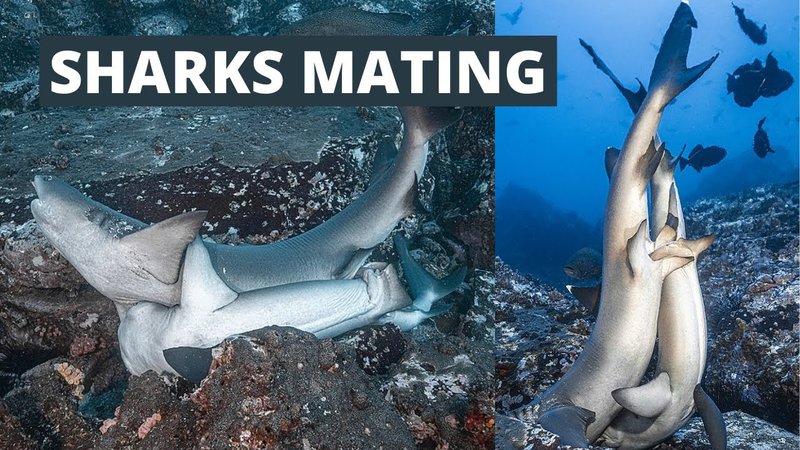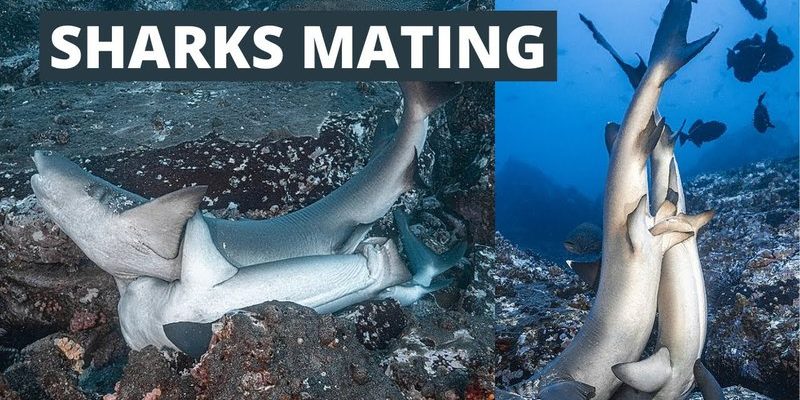
Shark Reproductive Strategies
Sharks have three primary reproductive strategies: oviparity, viviparity, and ovoviviparity. Each method serves a unique purpose and has adapted to different environments and species.
- Oviparity: This is when female sharks lay eggs, which develop outside their bodies. Think of it like a bird laying eggs in a nest. These eggs are usually encased in a tough, protective shell. For instance, the horn shark lays its eggs in a safe crevice on the ocean floor, where they can develop without disturbance.
- Viviparity: In this method, the female gives birth to live young, similar to mammals. The pups develop inside the mother, receiving nutrients directly through a structure akin to a placenta. The great white shark is known for this method, giving birth to around two to twelve pups at a time.
- Ovoviviparity: This strategy is a mix of the two above. Female sharks carry fertilized eggs inside their bodies, where they hatch and then give birth to live young. The tiger shark uses this method, allowing pups to develop in relative safety inside their mother before emerging into the world.
Each of these strategies has its pros and cons, and they reflect the evolutionary adaptations sharks have made to survive in different environments. The diversity in how sharks reproduce is truly a testament to their resilience.
Mating Rituals and Courtship Behavior
Shark mating rituals can be quite elaborate, showcasing a world filled with unique behaviors. Male sharks often engage in a courtship dance, which can involve chasing and sometimes biting—don’t worry, it’s not as aggressive as it sounds. This biting is often more about establishing dominance and less about aggression, as males are trying to hook up with a female, quite literally.
One intriguing aspect of shark mating is that females can store sperm for extended periods, sometimes even for years! This gives them the flexibility to fertilize their eggs when environmental conditions are just right. You might be wondering, how does this work? Well, female sharks have specialized organs called cloacas, which allow them to store the sperm until they’re ready to use it. It’s a smart strategy that maximizes the chances of survival for their young.
During mating, males often use their claspers (a pair of specialized organs) to lock onto the female. It can look a bit clumsy and awkward, but it’s essential for successful fertilization. After mating, the female will find a safe place to lay her eggs or carry her pups, depending on her reproductive strategy.
Gestation Period and Birth
The gestation period for sharks varies widely among species. For instance, great white sharks can have a gestation period of nearly 11 months, while others, like the hammerhead shark, might only carry their pups for about 9 months. This timeline impacts how many pups a shark can have and can depend on environmental factors like food availability.
When it’s time for a shark to give birth, it can be quite a spectacle. In viviparous species, the pups often swim away immediately once they’re born, demonstrating impressive independence. In some cases, like with nurse sharks, mothers have been observed remaining with their young for a short period after giving birth, offering protection just as many mammals do.
Interestingly, sharks can have litters of varying sizes. A single female whale shark can give birth to up to 300 pups in one go, while other species might only produce two or three. This variation comes down to survival strategies—more pups mean better odds of some surviving in the wild.
Parental Care Among Sharks
Sharks are often thought of as lone hunters, which is partly true, but some species exhibit levels of parental care that might surprise you. For example, nurse sharks are known to stay close to their young for a while after birth. This care can help improve survival rates by protecting pups from predators.
On the flip side, many sharks abandon their young soon after birth. This strategy involves a “quantity over quality” approach—more offspring means a higher chance that some will survive despite the many dangers lurking in the ocean.
Let’s consider the tiger shark. After giving birth, these mothers may leave their young in specific nursery areas where other larger predators will not venture. These safe zones provide a better chance for the pups to grow and develop before venturing into the open ocean.
Challenges and Conservation of Shark Populations
The reality is that sharks face significant threats that impact their reproductive success and overall populations. Overfishing, habitat loss, and climate change are putting immense pressure on these incredible creatures. As apex predators, sharks play a crucial role in maintaining the health of marine ecosystems. Without them, entire ocean communities can become unbalanced.
One significant challenge is finning, where sharks are caught, their fins removed, and the rest of the body discarded. This inhumane practice threatens shark reproduction since it reduces adult populations dramatically. Conservation efforts are underway globally to combat these issues, focusing on creating protected marine areas and implementing sustainable fishing practices.
You might be wondering what you can do to help sharks. Supporting conservation organizations, advocating for sustainable seafood, and raising awareness about the importance of sharks can make a difference. Remember, every little bit counts!
The Future of Shark Reproduction
As we look to the future, the reproductive strategies of sharks will continue to evolve in response to environmental changes. Scientists are actively studying how climate change affects shark breeding, including shifts in their habitats and food sources. Understanding these dynamics is crucial for ensuring the survival of shark species.
Additionally, advances in marine biology are helping us discover even more about shark reproduction. Techniques like genetic analysis provide insights into breeding patterns and demographics within shark populations. By learning more about these magnificent creatures, we can better protect them and ensure they continue to thrive in our oceans.
The journey of shark reproduction is a complex and thrilling aspect of their life cycle. By appreciating the diversity and challenges that come with it, we can foster a deeper respect for these incredible animals.
In conclusion, the breeding and reproduction of sharks are essential pieces of the puzzle in understanding these magnificent creatures. The next time you think about sharks, remember the complexities of their life cycle, the incredible adaptations they’ve made, and how crucial they are for the health of our oceans. Let’s work together to protect them for generations to come!

